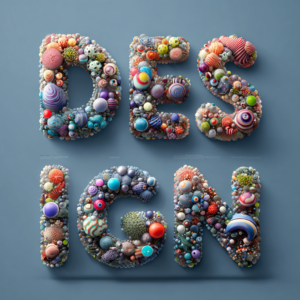Building your own website can feel overwhelming, especially with all the jargon thrown around in web design.
DIY website? This glossary breaks down the essentials—terms you’ll encounter while crafting your site—into clear, actionable explanations. Whether you’re using a platform like WordPress or dabbling in code, these definitions will guide you. I’ve included all the “meta” stuff (metadata) and more, with tips to make your site shine.
Accessibility (A11y)
Accessibility ensures your website works for everyone, including people with disabilities. Think of it as digital hospitality—making sure visually impaired users can “read” your site with screen readers, or that keyboard-only users can navigate it. For DIY builders, this means adding alt text to images, choosing high-contrast colors (e.g., black text on a white background), and avoiding flashy animations that might trigger seizures. Tools like WAVE or your CMS’s accessibility checker can help you spot issues. A11y isn’t just nice-to-have—it’s a legal requirement in some places and boosts your site’s reach.
Alt Text
Short for “alternative text,” this is a description you add to images in your HTML code, like <img src=”cat.jpg” alt=”A fluffy orange cat sleeping on a couch”>. It’s crucial for accessibility (screen readers read it aloud) and SEO (search engines use it to understand your images). DIY tip: Keep it concise but descriptive—aim for 5-15 words. If you’re using a CMS like Squarespace, there’s usually a field to enter this when uploading pictures.
Backend
The backend is the engine room of your website—everything users don’t see, like databases, servers, and code that processes data. For example, when someone signs up for your newsletter, the backend stores their email. Most DIY builders won’t touch this directly if they’re using platforms like Wix or Shopify, which handle it for you. But if you’re self-hosting or coding from scratch, you’ll need to understand servers and languages like PHP or Python.
Bandwidth
Think of bandwidth as the highway your website’s data travels on. It’s the amount of data (in megabytes or gigabytes) your hosting plan allows to transfer between your site and visitors each month. A simple blog might use 1GB, but a site with videos could gobble up 10GB fast. Check your hosting provider’s limits—Bluehost or SiteGround often offer plans with “unlimited” bandwidth for small sites, perfect for DIYers starting out.
Browser
A browser (Chrome, Edge, Safari, Firefox) is how people view your site. Each renders your design slightly differently, so test your site across them. A button that looks perfect in Chrome might be misaligned in Safari. DIY tip: Use free tools like BrowserStack to preview your site without needing multiple devices.
Cache
Caching stores temporary copies of your site’s files (like images or HTML) so it loads faster for returning visitors. Imagine it as a shortcut—your browser doesn’t need to fetch everything anew. For DIYers, plugins like WP Rocket (for WordPress) or built-in caching on platforms dayanlike Webflow can speed things up. Clear your cache when updating your site to ensure changes show up.
CMS (Content Management System)
A CMS is your DIY best friend—a tool like WordPress, Joomla, or Wix that lets you build and update your site without coding from scratch. WordPress, for instance, powers over 40% of websites because it’s flexible and beginner-friendly. You pick a theme, add content, and tweak settings—all through a dashboard. It’s like a digital Lego set for websites.
CSS (Cascading Style Sheets)
CSS is the magic wand for your site’s appearance. It controls colors, fonts, spacing, and layouts. HTML says, “Here’s a heading,” but CSS says, “Make it blue and 20px tall.” Most CMS platforms let you add custom CSS—on WordPress, go to Appearance > Customize > Additional CSS. Example: p { color: #333; font-size: 16px; } grays out your text and sets its size. Play with it to personalize templates.
Domain Name
Your domain name is your site’s online address, like www.myawesomeblog.com. It’s your brand’s home on the web. Buy one from registrars like Namecheap or Google Domains (usually $10-15/year), then link it to your hosting. DIY tip: Keep it short, memorable, and relevant—avoid hyphens or weird spellings if possible.
DPI (Dots Per Inch)
DPI measures image resolution—how many dots fit in an inch. For web design, 72 DPI is standard because screens don’t need the 300 DPI of print. High-DPI images slow your site down. Use tools like Canva or Photoshop to resize and export images at 72 DPI before uploading.
Favicon
That tiny icon next to your site’s name in a browser tab? That’s a favicon (e.g., Twitter’s bird). It’s a small branding touch—usually 16×16 or 32×32 pixels. Most CMS platforms have a spot to upload one (look under “Site Identity” in WordPress). DIY tip: Use a simplified version of your logo and save it as a .ico or .png file.
Frontend
The frontend is what visitors see and interact with—text, images, buttons, menus. As a DIY builder, this is your playground. You’ll tweak themes, upload photos, and arrange layouts here. Tools like Elementor (a WordPress page builder) let you drag and drop to design the frontend without coding.
Hosting
Hosting is like renting space for your website’s files on a server connected to the internet. Without it, your site stays offline. DIY-friendly hosts like Hostinger or DreamHost offer cheap plans ($3-10/month) with one-click CMS installs. Look for free SSL and good support when choosing.
HTML (HyperText Markup Language)
HTML is the skeleton of your site, structuring content with tags like <h1> for headings or <p> for paragraphs. Example: <h1>Welcome</h1><p>Hi there!</p> creates a big title and a paragraph. You don’t need to master it for a CMS, but learning basics lets you fix small issues or add custom bits—like embedding a YouTube video.
HTTP/HTTPS
HTTP (HyperText Transfer Protocol) moves data between your site and users. HTTPS adds a security layer with encryption—crucial for trust and SEO. You’ll see a padlock in the browser with HTTPS. Most hosts offer free SSL certificates via Let’s Encrypt to switch from HTTP to HTTPS. DIY must-do: Enable it.
JavaScript
JavaScript brings your site to life with interactivity—think dropdown menus, pop-ups, or sliders. You don’t need to write it from scratch; grab snippets from sites like CodePen or use CMS plugins (e.g., “Insert Headers and Footers” on WordPress). Example: A button that alerts “Hello!” might use <button onclick=”alert(‘Hello!’)”>Click Me</button>.

Meta Description
A meta description is a 150-160 character blurb in your HTML (e.g., <meta name=”description” content=”DIY web design tips for beginners”>) summarizing your page. It appears in search results below the title. Write compelling ones to draw clicks—think of it as your site’s elevator pitch. CMS tools like Yoast SEO make this easy.
Meta Keywords
Once a big deal, meta keywords (e.g., <meta name=”keywords” content=”web, design, DIY”>) told search engines your page’s topics. Google ignores them now—focus on quality content instead. Skip this unless you’re targeting ancient search engines.
Meta Tags
Meta tags live in your HTML <head> section, providing info about your page—like the title tag, meta description, or character encoding (e.g., <meta charset=”UTF-8″>). They don’t show on the page but influence SEO and browser behavior. DIY tip: Use a plugin like All in One SEO to manage them without coding.
Navigation
Navigation is your site’s roadmap—menus and links guiding users around (e.g., “Home,” “Blog,” “Contact”). Keep it intuitive; a cluttered menu frustrates visitors. Most CMS platforms let you drag and drop menu items—test it on mobile too.
Pixel
A pixel is the tiniest dot on a screen. Web design uses pixels for sizing—like a 1200px-wide banner. DIY tip: Compress images to fewer pixels (e.g., 800×600) for faster loading without losing quality.
Responsive Design
Responsive design adapts your site to any screen size—phones, tablets, laptops. A good responsive site shrinks menus into a “hamburger” icon on mobile. Most DIY templates (e.g., from Wix) are responsive, but preview your site on different devices to confirm.
SEO (Search Engine Optimization)
SEO gets your site noticed on Google. It’s about smart meta tags, fast loading, and keyword-rich content (e.g., “DIY web design” in your blog). Use free tools like Google Search Console to track performance and tweak as needed.
SSL (Secure Sockets Layer)
SSL encrypts data between your site and users, enabling HTTPS. It’s a must for security and credibility—visitors trust sites with that padlock. Most hosts bundle free SSL; activate it in your control panel.
Title Tag
The title tag (e.g., <title>My DIY Blog</title>) names your page in browser tabs and search results. Keep it 50-60 characters, unique per page, and keyword-friendly. CMS platforms often auto-generate these, but customize them for better SEO.
UI (User Interface)
UI is your site’s look and feel—buttons, colors, layouts. A clean UI (e.g., big, clear buttons) keeps users clicking. DIY tip: Stick to 2-3 colors and simple fonts like Arial or Roboto.
UX (User Experience)
UX is how users feel using your site. Fast loading, easy navigation, and helpful content = good UX. Test your site with friends— if they’re confused, tweak it.
Wireframe
A wireframe is a rough sketch of your site’s layout—boxes for headers, images, text. Draw one by hand or use Figma to plan before building. It’s like a blueprint for your DIY project.












